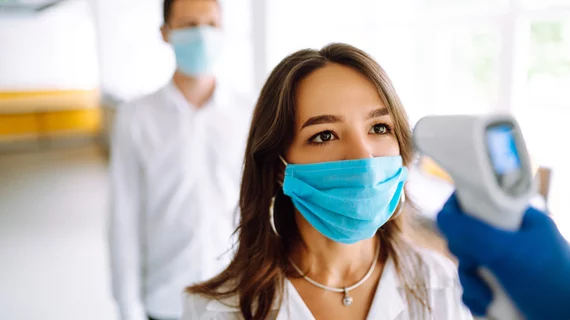Radiology practices hampered by COVID-19 must emphasize the patient experience and utilize “human design thinking” in order to return to normalcy, experts said this week.
After precipitous drops in imaging visits earlier this year, practices have deployed a variety of strategies—checking temperatures, spacing out appointments and requiring masks, just to name a few. And it’s beginning to pay off, with some radiology providers returning to pre-pandemic levels, according to a Monday report from RSNA News.
The radiology community, however, must make sure that it’s communicating these efforts to patients, so they know it is safe, Richard Sharpe, MD, a Mayo Clinic radiologist, told the website.
“There’s a very low risk to patients when these precautions are in place, but we need to make sure they are getting the message,” said Sharpe, a member of the Radiological Society of North America’s COVID-19 Task Force. “Radiology practices need to do proactive outreach to make sure patients show up, feel safe and get the imaging they need.”
The group is now conducting research to help understand the factors that go into patients’ decisions to seek, or delay, imaging care. Earlier this month, experts from New York Presbyterian Hospital published the results of their own patient survey in JACR on this topic. Patients highlighted radiology appointments on the same day as clinical visits, and staff friendliness as two of their big asks.
RSNA plans to highlight this topic at its upcoming virtual annual meeting, with a session on human design thinking and its importance amid the pandemic. The approach puts the healthcare consumer at the center of such considerations, rather than architects or hospital administrators.
“As patients become increasingly engaged in their own care, the patient experience is now more important than ever for radiologists,” Susan John, MD, chair of the RSNA’s Public Information Committee, which is sponsoring the session, told the society’s news website. “Human design thinking is a tool that can help us understand what the patient is experiencing so we can give them the reassurance and confidence to get the imaging they need.”
Adding another wrinkle to this conversation, several prominent hospital systems have begun reducing or suspending elective procedures as COVID-19 cases continue to rise. Those include Sharpe’s Mayo Clinic, along with Advocate Aurora Health, the Cleveland Clinic, and St Luke’s Health System (though none make a mention of imaging).

